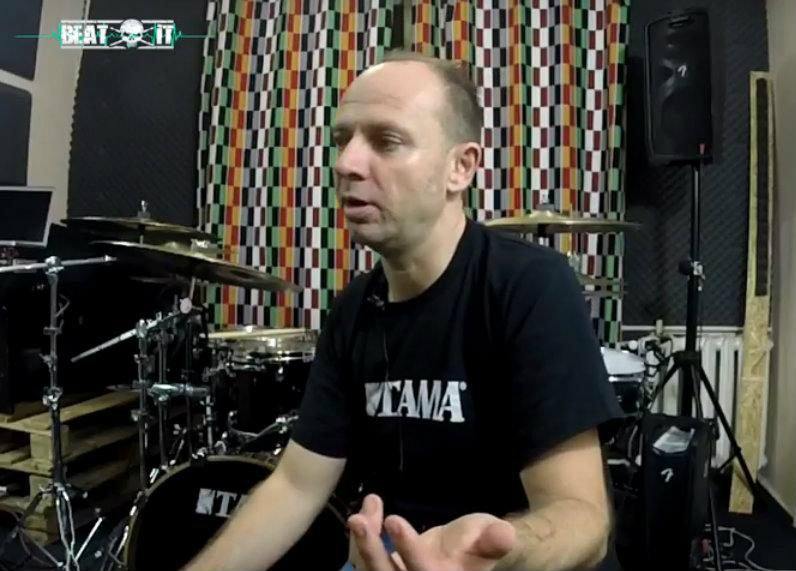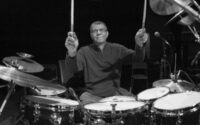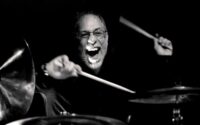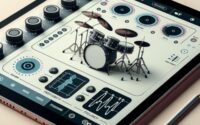Peter Szendofi is one of the most talented professional drummers, composers and most frequently employed musicians in Hungary, whose reputation as an educator crossed the Hungarian borders long ago. He teaches at Galileo University Guatemala, North Karelia University in Finland and Drummers Collective, New York. He is also a member of the Drum Set Committee of Percussive Arts Society. As a musician, Peter has played on about 130 albums, and has performed with Loop Doctors (with Gary Willis and Brandon Fields), Fusio Group, Trio Ricardo, Subjective Symptom, and Eastwing Group, among others. He has also done a video for the widely popular Drumeo channel.
Peter is busy conducting drum clinics, workshops, courses and master classes all over the world. He has also visited Poland with those in mind, one of which was organized by us – www.beatit.tv. We invited him to Poznań, Poland, to do a drum clinic at the Republika Rytmu music school.
We took the opportunity to interview the man in-depth so that our viewers can also get at least a tiny bit of this great drummer’s knowledge and experience. In the fifth part, we talk about his approach to working in a recording studio.
Peter Szendofi is is an international artist endorser for Tama Drums, Bosphorus Cymbals, Remo Drumheads, Regal Tip Sticks and Humes&Berg Cases.

Peter Szendofi talks to BeatIt, Pt. 5
When recording, people have gravitated towards the digital technology for financial reasons, for sure. Nowadays, it’s cheaper to do a professional recording, whatever that term means. If I have the Pro Tools in my laptop, and I back that up with good microphones and a nice room, I can make a recording for a total of a couple of thousand US dollars. That’s why so many musicians try to record their albums in the kitchen. Of course, the result is not the same as in a professional studio. On the other hand, think about a Studer tape recorder, which is huge. There are three buttons on there: PLAY, STOP, RECORD. That’s it. You had to buy tape, which wasn’t cheap, and the maximum length of a reel was about 40 minutes. Plus, you could do like 40-50 recordings on one tape. Then, it had to be changed because it was stretched. The price is about 25-30 thousand US dollars. That’s just the tape. You still have to buy microphones, a mixing console, etc. If you want to do a recording session in a good studio in New York, it will cost you about 300 dollars per hour, including the sound guy. Most music projects have no budget for that. Obviously, there’s no question about sound quality. A tape recording is way better.
When I’m doing a jazz or fusion session, I always do whole takes. But I’ve done many pop or pop rock sessions where I would punch in, copy, paste and everything. I’ve been asked to play a constant groove for eight or sixteen bars, then some fills, eighth notes on the ride, and eighth notes on the bell. Those were put into Pro Tools and processed any way they wanted. That’s fine. A few years ago, I was invited to do a session in an old studio in Hungary. The live room is huge and they still use a tape recording device. I did the first take and it was OK, but I felt it would be better to change two 4-bar segments. I asked the engineer to do that, but he said it was impossible because it’s tape. I said: ‘Yes! I have to play the whole tune from A to Z!’. Just like a live concert. It’s not possible to punch in like two bars or something. That was a great challenge and a great feeling. On the other hand, when I’m doing a drum and bass/jungle recording, it’s not necessary to record the whole track from start to finish because you change effects, filters and so on. So I will usually play a take, then change the snare, or use a different cymbal, and we decide which fragment to put where at a later stage.
In New York, when a jazz trio goes into the studio, they often don’t use any post production, such as mixing. They record onto a DAT tape, but only two takes. They do a sound check, find the perfect balance between the instruments and: ‘Go!’. If they play louder, the recording will be louder. If somebody plays a bit softer, it will stay that way. Just like in the 50’s and 60’s.
Drummers and Drummerettes! Here is Peter Szendofi in the fifth part of an exclusive interview for www.beatit.tv!
Share







